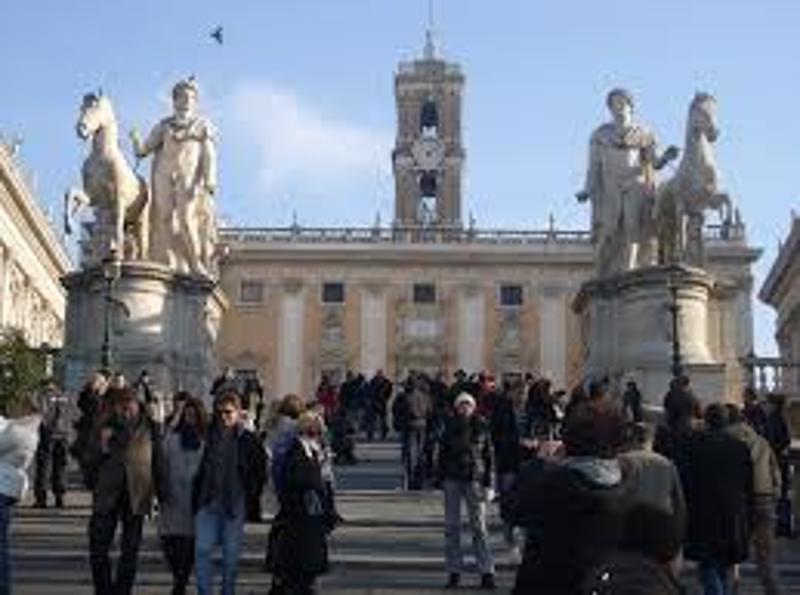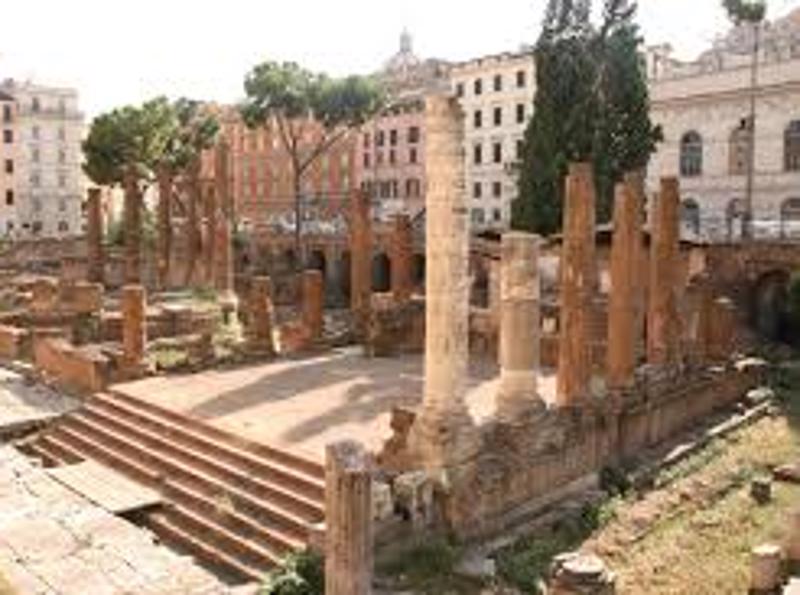Classics 304: Eternal Rome Digital Portfolio
Today we visited the Museo Capotilini on the capotaline hill. The immediate reaction that came from me was the reaction to the two statues that guard either side of the top of the stairs designed my Michaelangelo. They watch over all who enter the piazza and are colossal in size. These two statues are dressed in warrior-esque garb and stand next to a horse. These two men are the twins Castor and Pollux. Pollux was born of the god Zeus and so was immortal but Castor was not. Both twins are depicted with a cone shaped hat on their head, which is actually the shell of an egg and the reason we are able to identify these statues as Pollux and Castor. The story goes that Castor and Pollux’s mother, Leda, is seduced by Zeus who had taken the form of a Swan and so the pair were hatched from an egg. What’s amazing about these statues is that they were art work commissioned by local noble families and shown in their own personal homes and gardens. When you walk along side these huge statues you get a taste of the extravagance that ancient Rome produced in its hay day and the way of life these wealthy Romans lived. They’re a blaring reminder of the strength of ancient Rome and an example of how they immortalized their heroes.
kashford
22 chapters
16 Apr 2020
Chapter One: The Gemini Statues
Museo Capatalini
Today we visited the Museo Capotilini on the capotaline hill. The immediate reaction that came from me was the reaction to the two statues that guard either side of the top of the stairs designed my Michaelangelo. They watch over all who enter the piazza and are colossal in size. These two statues are dressed in warrior-esque garb and stand next to a horse. These two men are the twins Castor and Pollux. Pollux was born of the god Zeus and so was immortal but Castor was not. Both twins are depicted with a cone shaped hat on their head, which is actually the shell of an egg and the reason we are able to identify these statues as Pollux and Castor. The story goes that Castor and Pollux’s mother, Leda, is seduced by Zeus who had taken the form of a Swan and so the pair were hatched from an egg. What’s amazing about these statues is that they were art work commissioned by local noble families and shown in their own personal homes and gardens. When you walk along side these huge statues you get a taste of the extravagance that ancient Rome produced in its hay day and the way of life these wealthy Romans lived. They’re a blaring reminder of the strength of ancient Rome and an example of how they immortalized their heroes.


1.
Introduction
2.
Chapter One: The Gemini Statues
3.
Chapter 2: The Largo Argentina
4.
Chapter Three: The Temple of Jupiter
5.
Chapter 4: The Via Sacra
6.
Chapter Five: The Colosseo
7.
Chapter 6: Statue of Augustus
8.
Chapter Seven: The Arch of Titus
9.
Chapter 8: Constantine's Basilica
10.
Chapter Nine: The Tiber River
11.
Chapter 10: The Sarcophagi
12.
Chapter 11: Caesars Forum
13.
Chapter Twelve: St. Peters Basilica
14.
Chapter 13: Roman Sewers
15.
Chapter Fourteen: Egyptian Obelisk
16.
Chapter 15: The Pantheon
17.
Chapter Sixteen: Bernini Bridge
18.
Chapter 17: The Wedding Cake
19.
Chapter Eighteen: The Mussolini Window
20.
Chapter 19: Basilica of Saint Lawrence
21.
Chapter 20: The Piazza del Popolo
22.
Conclusion: The more things change